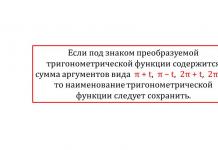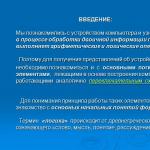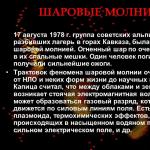| Introduction | 3 |
| 1. General information about the company | 4 |
| 2. Market participants | 7 |
| 7 | |
| 2.2. Competitors | 7 |
| 2.2.1. Market Trends | 8 |
| 2.2.2. SWOT analysis | 10 |
| 2.3. Consumers | 11 |
| 2.3.1. Market segmentation | 12 |
| 3. Company products | 14 |
| 3.1. Brief description of AvtoVAZ products | 14 |
| 15 | |
| 3.2.1. BCG Matrix | 15 |
| 3.2.2. GE-McKinsey Matrix | 16 |
| 3.2.3. Ansoff matrix | 17 |
| 3.3. Pricing | 18 |
| 3.4. Service and sales network | 19 |
| 3.5. Evaluation of the AvtoVAZ advertising campaign | 20 |
| Conclusion | 21 |
| List of used literature | 23 |
Introduction
I decided to choose AvtoVAZ as the company under study, because the problems of the domestic automotive industry today concern many citizens of our country: What is its situation today and development prospects in the future? Will it be able to withstand competition with foreign automakers that are rapidly penetrating the Russian market? And finally, is it worth introducing protectionist measures or, conversely, lowering barriers for foreign companies to attract investment? The answers to these questions are ambiguous, and largely depend on the real state and potential of companies at the moment, which in turn are determined by their marketing policies. Let's try to look at these issues from the side of AvtoVAZ OJSC. He is the largest representative of the domestic automobile industry, but even he, who has greater resources than his Russian competitors, has a lot of problems that will be truly difficult to cope with.
In this course work, I tried to consider the Russian automobile market at the end of 2003 from different angles: its players, trends, opportunities and threats; AvtoVAZ’s position on it, its development prospects, the strategies that the company is currently using, and what, in my opinion, it should focus on in the near future.
1 . General information
On April 5, 1966, Chairman of the Council of Ministers of the USSR Alexey Nikolaevich Kosygin made a report on the five-year plan for the development of the national economy for 1966-1970, where the need to build a new automobile plant in the USSR was first mentioned. On May 4, a protocol “On cooperation in the development of a car design, a car plant project and its construction in the USSR” was signed with the Italian automaker FIAT. In addition, an Interbank Loan Agreement was signed between Vneshtorgbank of the USSR and the Instituto Mobigliaro Italiano Bank to pay for the supply of equipment. On April 19, 1970, at 7 am, the first six VAZ-2101 cars rolled off the main assembly line of the plant, although a significant number of parts and components were still coming from abroad.
JSC AVTOVAZ is the largest manufacturer of passenger cars in Russia and Eastern Europe. Its share in our country's gross domestic product is about 1%.
During the period 1970 – 2003, the company produced more than 21 million cars. The existing production potential of the automotive complex allows the production of over 700,000 cars per year.
OJSC AVTOVAZ is the city-forming enterprise for Tolyatti, which has almost a million inhabitants. That is why the joint-stock company includes divisions that provide food, transportation services, medical care, recreation, and also provide assistance in raising children.
The assembly of small cars under the license of JSC AVTOVAZ is organized in the cities of Syzran, Izhevsk (Russia), Lutsk, Kherson, Zaporozhye, Kremenchug (Ukraine), Quito (Ecuador), Cairo (Egypt), Montevideo (Uruguay). The Oka VAZ-1111 is being assembled in Serpukhov and Naberezhnye Chelny.
Mission– satisfying a wide range of consumers with practical passenger cars.
Corporate slogan- Work for the benefit of Russians and for the glory of Russia!
Social politics
JSC AVTOVAZ traditionally maintains a high-level attitude towards “human resources” and an understanding of their role in the commercial success of the joint-stock company. The corporate management system provides a wide range of tools and methods for working with personnel, incl. social policy tested and meaningful over many years.
A variety of social benefits and guarantees, social programs and employee assistance programs make it possible to attract and retain the most valuable personnel, strengthen the loyal attitude of employees to the joint-stock company, and contribute to achieving the goals of the enterprise.
Considering that the costs of maintaining the social sphere reduce the investment attractiveness of the enterprise and worsen its position in the conditions of growing internal competition, the joint-stock company has chosen the path of forming targeted social programs - “new generation” programs.
When implementing social policy and forming targeted social programs, some other fundamental approaches are also taken into account:
1. Programs, benefits and guarantees are focused on the standards in force in the joint-stock company and are applied in areas that are limited or absent in the system of government institutions;
2. The company uses programs, benefits and guarantees that have the greatest motivational impact; the procedure for their application is consistent with the representative bodies of the labor collective;
3. A number of important and fundamental points are considered to optimize taxation and prevent unreasonable increases in personnel costs.
4. One of the main places in social policy is the targeted provision of benefits and guarantees to employees of the enterprise.
Solving the problem of identifying the personal goals of the employee with the goals of the enterprise is the main goal of social policy. The company organizes the following social programs:
Housing program "Lada-Dom"
The goal is to improve the living conditions of workers. Employees improve their living conditions at their own expense; The company provides free housing subsidies to program participants and provides investments for the engineering development of areas for the construction of residential buildings.
Voluntary health insurance program
Medical care for employees of JSC AVTOVAZ, like all citizens of the Russian Federation, is provided within the framework of the territorial program of compulsory health insurance (CHI). The provision of medical care within the framework of the territorial program is carried out by municipal treatment and preventive institutions and the structural unit of AVTOVAZ OJSC - the occupational medicine center.
Non-state pension program
This program is aimed at solving specific problems: ensuring the planned withdrawal of personnel reaching retirement age, and organizing additional pension payments to former employees in order to “soften” the transition period from a relatively high income in the form of wages to income in the form of a relatively small state pension. Additional non-state pension is formed from two sources - pension contributions of the employee and the enterprise.
Savings and Loan Program
The task is to create acceptable conditions for the purchase of real estate, goods and services with installment payments, incl. through the provision of consumer loans. The implementation of consumer plans is carried out by the housing and consumer cooperative "Social", created in the form of a non-profit organization.
2 . Market participants
2.1. Government institutions that regulate this market
The automobile market is regulated through duties on the import of used foreign cars into Russia, which are regularly reviewed by the government and submitted to the State Duma of the Russian Federation. In this matter, one cannot fail to note the active work of lobbyists in the domestic auto industry.
2.2. Competitors
The Russian automobile market is open and all the world's largest manufacturers are actually present on it. The products of Russian automotive industry enterprises face four groups of competitors in all segments of the domestic market.
| Russian automobile market at the end of 2003 |
||
| Quantity, pcs | Market share, % | |
| Used foreign cars (more than 3 years) | 288 316 | 19,61% |
| New foreign cars (up to 3 years) | 226 534 | 15,41% |
| New domestic | 898 000 | 61,09% |
| Foreign cars assembled in Russia | 57 150 | 3,89% |
| Total | 1 470 000 | 100,00% |

New domestic cars(there is practically no competition with them).
The volume of the Russian automobile market significantly exceeds the production capabilities of existing domestic enterprises, which practically excludes competition between the latter.
New imported cars(there is little competition with them).
New imported cars are quite expensive. The cheapest of them are 1.3-1.5 times more expensive than their Russian counterparts. Thus, the bulk of foreign-made cars that compete with the products of AvtoVAZ JSC are concentrated in the price range from 11 to 15 thousand US dollars. In particular, VAZ’s “opponents” are cars of such brands as: “Hyundai”, “Kia”; "Renault", "Peugeot"; "FIAT"; "Skoda"; "VolksWagen"; "Ford".
Used imported cars(there is strong competition with them).
The main competitor for the products of domestic enterprises is imported used automobile equipment. The bulk of used imported cars on the Russian market with a service life of 5-6 years are located in the price range, depending on the class, from 3 to 8 thousand US dollars, covering the entire price range of new domestic cars. Used imported passenger cars with a service life of about 5-6 years are superior to domestic cars in terms of consumer qualities, but are inferior to them in terms of repair and maintenance costs.
Cars from automobile assembly plants established in Russia with the participation (partial or full) of foreign capital
(there is still weak competition with them, but there is a threat of it becoming stronger due to a sharp reduction in duties on imported components).
So far they do not provide significant competition, since their production volumes are small, and prices, due to the use of almost only imported components, are not much lower than new imported cars. But there is a threat of a manifold increase in competition due to a sharp reduction in duties on imported components or the start of their production in Russia (which will also entail a significant drop in their prices).
2.2.1. Market Trends
In the new year 2004, the following market trends are observed:
1) In the first quarter of this year, for the first time in the history of Russia, more new used foreign cars (up to 3 years) were imported than used used ones (more than 3 years):
| 2003 | 1st quarter 2004 | |
| Up to 3 years | 44 % | 53,8 % |
| More than 3 years | 56 % | 46,2 % |
Moreover, according to the State Customs Committee of Russia, from January to March 2004, imports of foreign cars increased by 17% compared to the same period last year. “The growth is associated with two factors,” says Vladimir Detinich, head of the analytical department of the investment company OLMA. – The first is an increase in the amount of money in the country, which, in turn, led to an increase in effective demand for cars. Since demand cannot be satisfied by domestic producers, interest in foreign cars is growing. The second factor is the relative strengthening of the ruble, which has led to imported cars becoming cheaper.”
According to AvtoVAZ, until 2003, most potential buyers could realistically count on purchasing a car at a price of up to 7 thousand dollars. Now, taking into account the growing income of the population, priorities are shifting towards more expensive cars ($8-10 thousand and 10-15 thousand dollars) with higher consumer properties. But the domestic auto industry cannot offer such yet.
| 1st quarter 2003 | 1st quarter 2004 | Change | |
| Imported, pcs. | 80 000 | 93 800 | + 17,25% |


2) Today we are witnessing the beginning of a massive expansion of foreign automakers into the Russian market.
According to experts interviewed by RBC Daily, in 2004 the development of the Russian car market will be determined by the activity of foreign manufacturers. "Avtotor" (Kaliningrad), "Ford Motor Company" (Leningrad region), "Avtoframos" (Moscow), TagAZ (Taganrog), "UzDaewoo" (Uzbekistan) and the joint venture "GM-AvtoVAZ" (Tolyatti), taken together, will increase production by more than 40 thousand units. For the entire 2003, these enterprises produced 5.7% (57,150 units) of the total production of passenger cars in Russia. The growth trend in the production of foreign cars in Russia will continue: “... it became known that following the Japanese company Toyota, which is planning to build its own, already the eighth in the world and the first in Russia, plant, where the Corolla and Camry models will be assembled, about its plans for Russia stated the German automaker DaimlerChrysler" (www.aktex.ru, November 3, 2004). According to a number of experts, the growth in production volumes of cars under foreign brands in Russia in the next 3-4 years will be at the level of 50-100% per year. This will largely be facilitated by the Government’s decision to reduce import duties on components for car assembly plants in Russia to almost zero. According to expert estimates, the production of foreign cars within Russia next year will amount to 8–10% of the total volume, and by 2010 it will exceed 40% of car production in the Russian Federation.
Due to the increasing importance of this sector of automotive production, its structure should be examined in more detail:
Structure of foreign car production in Russia in 2003
| № | Company name | Location | What produces | Qty | In % of production volume |
| 1 | GM-AvtoVAZ | Tolyatti | Chevrolet Niva | 25 235 | 44% |
| 2 | Ford Motor Corp. | Vsevolzhsk | Ford Focus | 16 261 | 28,5% |
| 3 | Avtotor | Kaliningrad | 8 KIA models 2 BMW models | 8 415 | 14,7% |
| 4 | TagAZ | Taganrog | Hyundai Accent | 5 896 | 10,3% |
| 5 | Autoframos | Moscow | Renault Clio Symbol | 1 343 | 2,3% |
| – | Total | 57 150 | 100% | ||
At the same time, when promoting their cars, foreigners will make full use of the tools they have tested - loans, discounts, extended warranty periods, benefits on insurance, service, profitable programs for replacing an old car with a new one - and rely on the development of dealership centers in the regions. Russian car factories cannot afford anything like this. This once again confirms the reality of the threat of the transfer of part of the market to foreign automakers in Russia.
2.2.2. SWOT analysis
| Strengths | Weak sides |
| Brand recognition | Low quality products |
| Significant market share | Old model range |
| Low cost of production | Outdated production technologies |
| Cheap to maintain and operate | Insufficient amount of finance. funds |
| Improving product quality | |
| Model range update | |
| Modernization of production facilities |
| Possibilities | Threats |
| Increasing market share by displacing neighbors. competitors | Decrease in sales volume |
| Receiving financial support from the state | Increase in the number of competitors in the market |
| Attracting additional funds through the placement of securities on stock exchanges | Reduced import duties on used foreign cars after joining the WTO |
| Increased costs |
| Possibilities | Threats |
|
| Strengths | Increasing market share through inexpensive products Creation of a new model using raised funds Use brand awareness to increase market share | Improving product quality to displace competitors Development of new models to increase sales volumes |
| Weak sides | Development of new models, improvement of product quality, renewal of production capacities, due to attracted financial resources. funds |
At the moment, AVTOVAZ Company is using the following opportunities for growth:
Participation in joint projects with the world's leading automakers (GM Chevrolet)
Modernization of production facilities and improvement of product quality
Launch of a new model on the market in 2005 (Kalina)
Attracting additional financing through the placement of company securities on the Eurobond market
2.3. Consumers
AvtoVAZ found out that its buyer has a monthly income of up to $400. If a person earns more per family member, then he is already looking at “some other, more expensive cars.”
Today's consumer of Tolyatti Automobile Plant products looks something like this: a family man, the average composition of his family is three people, the income level per family member for about half exceeds $150, a third of consumers have incomes close to $250-300 per person. For some consumers it amounts to more than $300 per person.

The main need satisfied by AvtoVAZ is the need for freedom of movement; its specificity lies in the fact that someone needs a car for: work, family, off-road travel or going out of town, into nature
2.3.1. Market segmentation
By carrying out segmentation, an enterprise divides the market into separate segments, which are likely to be characterized by the same response to marketing incentives.
AvtoVAZ segments consumers based on the following criteria:
Geographically
| Signs of segmentation | Possible segments |
| Division by climate | Central part Siberia Far East North |
| Place of residence and population density | City Suburb Countryside |
| Population (for cities) | Up to 5 thousand; 5-20 thousand; 20-50 thousand; 50-100 thousand; 100-500 thousand; 500 thousand - 1 million; more than 1 million |
By demographic characteristics
| Signs of segmentation | Possible segments |
| Age | 22-29; 30-39; 40-59, 60 and older |
| Floor | Male |
| Family size (persons) | 1-2; 3-4 ; 5 or more |
| Income level (per month per person) |
According to consumer behavior in the market
| Signs of segmentation | Possible segments |
| Purchasing motives | Saving Reliability |
| Search for benefits | Market search: high quality goods good service lower than usual prices |
| Price sensitivity | Indifferent Prefers low prices Prefers high prices (as an indicator of quality) Avoids very high prices |
| | Indifferent |
| Degree of need for the product | Needed constantly Needed from time to time Never required |
3. Company products
3.1. Brief description of AvtoVAZ OJSC products
AvtoVAZ products are represented by five model lines:
Classic
Year of production: 1980
Straight design lines, large rectangular headlights, aluminum bumpers have become a significant step forward compared to the VAZ-2101 family.
Samara
Year of production: 2000
The advantages and advantages of LADA SAMARA sedan cars are a comfortable interior, a more convenient and advanced instrument panel, a spacious and convenient luggage compartment due to the enlarged lid, highly dynamic qualities, good handling and stability on various types of roads. The new heater design provides efficient heating of the interior.
Lada-110
Year of production: 2000
A comfortable car, characterized by a modern design, improved driving performance and a higher level of equipment. The shorter overall length compared to other models in the family allows for improved steering characteristics.
Niva
Year of start of production: 1977 (modernization in 1993)
One of the most successful design developments of JSC AVTOVAZ, combining the comfort of a passenger car and the cross-country ability of an all-terrain vehicle. LADA NIVA promptly filled a niche in the market that was empty at that time. On the basis of LADA NIVA, many vehicles for various purposes have been created, produced at involved enterprises. All-terrain capability and comfort are the distinctive features of the LADA NIVA.
This is a car for off-road driving, traveling to hard-to-reach places, hunting and fishing trips
Lada Kalina
Planned year of production start: 2005
This is a representative of a new family of cars being prepared for production at AVTOVAZ OJSC. Swift, graceful body contours, original, efficient lighting technology, and a new interior give the car an elegant, modern look.
Modern original design, new finishing materials used create comfortable conditions for the driver and passengers. This model is more maneuverable and adapted to traffic conditions in an urban environment.
3.2. Business portfolio analysis
3.2.1. BCG Matrix

Share of AvtoVAZ models on the Russian market:
1. Classic 12.68%
2. Samara 13.41%
3. Lada 110 13.51%
4. Niva 2.982%
Share of the closest competitors in the Russian market:
1. Izhmash 4.2%
2. Foreign cars 26.6%
3. Foreign cars 32.5%
4. UAZ 26.6%
Relative market share of AvtoVAZ:
1. Classic 3,019
2. Samara 0.504
3. Lada 110 0.508
4. Niva 0.112
Sales growth rate:
1. Classic -5%
2. Samara +11%
3. Lada 110 +19%
4. Niva +2%
According to the positions occupied in the BCG matrix, the following strategies should be applied:
1) Classic: obtaining maximum profits and gradually reducing production volumes due to a decrease in sales volumes. Directing the profits to the development of difficult children and new models.
2) Samara and Lada 110: compare development potentials and select the most promising product for investment.
3) Niva: not discontinue production, continuing to meet existing demand.
3.2.2. MatrixGE-McKinsey

This matrix allows you to make differentiated strategic decisions on the effective use of the company's potential, depending on different levels of market attractiveness.
The products of AvtoVAZ OJSC can be divided into several markets (based on price), each of which is distinguished by its ratio of attractiveness and strategic position of the company in it:
I. Passenger cars
1) from $3500 – up to $5000 (Classic)
The attractiveness of the market is low due to its slow but steady decline and falling profits.
The company's strategic position is strong:
Large production volume
Competitive prices
Large market share
Strategy: 1. Take full advantage
2. After 2-3 years – downsize.
2) from $6000 – up to $9000 (Samara, Lada 110)
Large market size with room for growth
Medium-high profits
Prices at the level of competitors (used foreign cars)
High intensity of competition
Production expansion opportunities
Low quality products
Poor image of the company in the market
Strategy: 1. Strengthen and develop (Lada 110);
2. Retain (Samara) and further benefit fully
II. SUVs
From $7000 to $8000 (Niva).
Market attractiveness is high:
Large market size
Virtual absence of strong competitors
The strategic position of the company is weak:
Old model range
Low quality
Strategy: 1. Hold
2. Develop a new model for a given market, and gradually withdraw the old one
3.2.3. Ansoff matrix
| Available markets | New markets |
|
| Available Products | Expansion of presence (penetration) | Development of new markets |
| New products | Product development | Diversification |
The marketing attractiveness of a company's strategies is determined by sales volume and the likelihood of risk. AvtoVAZ should use several different strategies depending on the product.
For existing products (Samara, Lada 110), it is advisable to apply a strategy of expanding presence in existing markets by changing the proposed color scheme and introducing various modifications of cars.
New markets should be developed for the Niva SUV. It may be suitable to develop various modifications for firefighters, medical, forestry services, the army, etc.
For the new Lada Kalina model, a product development strategy should be applied, advertising and PR campaigns should be carried out in order to attract the interest of potential buyers.
In our opinion, the ratio of sales volumes and the amount of risk of these two strategies is commensurate with the expected profit from their implementation.
3.3. Pricing
The pricing system for products of the Volzhsky Automobile Plant contains the following principles:
Internal needs of the enterprise (ensuring planned profitability, profit)
Cost (cost of energy, component materials, as well as economic efficiency of production)
Seasonal declines and rises in demand for certain modifications
Relationships with dealers
Changes in the dollar exchange rate
Changes in market conditions
At the end of each year, AvtoVAZ draws up and approves a marketing plan for the next year. The basis for drawing up this document is data on the state budget, which is adopted by the State Duma, and forecasts of changes in the dollar exchange rate. Based on the example of previous years, experts can figure out what the dynamics of changes in the money supply among the population may be, and what part of it can be spent on buying cars. The forecast for this year is compiled by month and by each model. This is explained by the fact that there are seasonal declines and increases in demand for certain modifications. We have arrived at a certain figure that changes with the rate of inflation. If you compare the graph of price changes and the graph of changes in the monetary base, it turns out that they repeat each other with a slight delay: people have money - prices go up, the amount of “cash” is stable - prices also hold. Typically, car prices lag 30 to 40 percent behind inflation. As of today, the deviation from our forecast is 0.005 percent.
The delta between the selling price, the retail price and the forecast price must fulfill a number of tasks:
loan collateral
risk insurance when lending for the purchase of the entire production of cars
participation of dealers in VAZ projects (for example, a major advertising campaign)
execution of agreed service network development programs.
When developing a pricing policy, AvtoVAZ also considers it important to take into account that car prices should grow slower than inflation.
3.4. Service and sales network
At the end of 2003, the company made a transition to a two-level sales system for commercial products, presented in the form:
AvtoVAZ – Regional distributor – Dealers
Regional supply departments – Dealers


During 2003, AvtoVAZ approved requirements for service and sales network enterprises (dealers) to have:
Repair and maintenance facilities
Paved car storage areas
Showroom, premises for clients of a regulated area
Required list of equipment
Types of services offered
One of the main tasks of AvtoVAZ is to develop a service and sales network and increase sales in the Far East market. Today there are already five regional vehicle supply departments operating here.
AvtoVAZ dealers are directly involved in advertising, the largest of which are Inkom-Lada, Avto-real, Vostok Lada, Hermes Lada, Lada-Favorit. These dealers conduct various advertising campaigns on TV, in the media, and implement sales promotion programs by introducing various discounts, bonuses, sales on credit and in exchange for old cars (trade-in). Part of the AvtoVAZ advertising campaign is participation in various types of car exhibitions and auto shows, preparation and participation of the company team in road racing (Formula 2000).
The company's advertising policy is aimed at the average citizen of the Russian Federation aged 22 to 39 years, having a family of 3 to 4 people with an average income of 300-400 US dollars per person. However, in terms of advertising and promotion activity, the company is still losing to its competitors. AvtoVAZ will need especially strong advertising when introducing new models to the market, such as the Lada Kalina.
Conclusion
In conclusion, I would like to note once again: today the Russian automobile market is divided in favor of AvtoVAZ. However, current trends are an ominous reminder that this situation will not last forever. Dynamic expansion of the production of foreign brands in Russia, together with the Government’s decision on the maximum reduction of duties on the import of components for car assembly plants, an active advertising and PR campaign, systems of discounts, bonuses, loans, exchange of old cars for new ones, an after-sales service system (warranty and non-warranty ), – threatens a radical redistribution of the market.
In the next 5 years, the company will maintain its strong competitive position in the market and a larger market share, however, with continuing trends, AvtoVAZ will gradually lose its position. During these 3-5 years, it is necessary to take active measures to strengthen the company’s competitiveness in the market:
1) A radical change in the company's image.
The image of AvtoVAZ as a manufacturer of practical, modern, affordable and reliable cars in a wide variety of designs will create the foundation for further growth. This can be achieved primarily through:
Steady improvement of product quality (10 rules of the corporate quality system have been developed)
Modernization of production facilities
2) Development of new basic models with an interval of no more than 5 years and a complete update of the model range until 2008, increasing the package of services accompanying the cars produced. To achieve this, the company invests in R&D, which over the past 5 years amounted to 1.7% of revenue, and capital investments were at the level of 6.0% of revenue. This generally corresponds to the volume of similar expenses of the world's major automobile companies.
3) Work to reduce costs and production costs (since WTO - see report)
4) Reform and development of the dealer network, customer services, etc. factory lending to buyers.
5) The plant is already implementing an environmental management system in accordance with the requirements of the international standard ISO-14001. However, after Russia signs the Kyoto Protocol, one more factor affecting the cost of production will have to be taken into account: the plant will have to develop a system for monitoring the level of greenhouse gas emissions into the atmosphere.
6) Actively searching for opportunities to form strategic alliances with major investors in various areas of activity. To do this, it is necessary to increase the openness and transparency of the company, which is what the current management of the company is trying to achieve by conducting audits by reputable international agencies (PriceWaterHouse Coopers) and participating in international investment ratings (Moody’s).
Thus, having considered the company’s position in the modern market, its strengths and weaknesses, observed and predicted market trends, we can conclude that maintaining and further strengthening the company’s competitiveness in the market is possible only if active actions are taken in this direction. Let's hope that AvtoVAZ management uses strategies that will allow it to maintain and further increase its market share.
List of used literature:
E.P. Golubkov “Fundamentals of Marketing”, M.: 1999
E.P. Golubkov “Marketing Research”, M.: 1998.
F. Kotler “Fundamentals of Marketing”, M.: 1990
“Annual report of OJSC AvtoVAZ for 2003”, www.vaz.ru
www.lada-auto.ru – Official website of OJSC AvtoVAZ
www.history.vaz.ru – AvtoVAZ: corporate history
www.vaz.ru/social - Social programs of JSC AvtoVAZ
As well as other information resources:
www.rbcdaily.ru – RBC Daily – daily analytical newspaper
www.gazeta.ru – News agency Gazeta.ru
www.tltinfo.ru – Tolyatti Information Server
www.ladaonline – Information portal
www.ej.ru – Weekly magazine
www.aktex.ru – News battery
www.falshivkam.net - National agency to combat the spread of falsifications
www.nwcars.ru – All motor transport of the North-West
www.autonews.ru – Latest news, reviews and tests
Send your good work in the knowledge base is simple. Use the form below
Students, graduate students, young scientists who use the knowledge base in their studies and work will be very grateful to you.
Similar documents
The essence of an enterprise's competitive advantage. Analysis of the company's opportunities and threats in a competitive environment (SWOT method). Analysis of competitive advantages using the SNW method. Characteristics of business strategies aimed at increasing competitiveness.
course work, added 05/16/2011
Theoretical foundations of the technology for forming competitive advantages in an organization. The place and role of competition in the market system. Methods of competitive advantages of products. Evaluation of the advertising policy and competitive advantages of Monolit LLC products.
course work, added 04/08/2010
Development of competitive strategies for the company. Strategic factors in the development of competitive advantage, approaches to its identification. Ways to improve the competitiveness of TSC Service LLP. Analysis of the company's market position and competitive advantages.
thesis, added 10/27/2015
A study of the competitive forces acting on a restaurant. Review of competitive positions and possible actions of rival firms. Identification of key factors of competitive success. Analysis of consumer market power. Assessing the firm's strategic actions.
test, added 12/19/2014
The concept of competition and competitive advantage. Analysis of financial and economic activities and competitive advantages of CJSC "August". Ways to improve the system for managing a company's competitive advantages, assessing their economic efficiency.
course work, added 10/21/2010
Marketing as a complex socio-economic category. Company's mission. Product range, description of leading product positions. Assessment of the competitive positions of enterprises, directions of marketing policy. Assessment of competitiveness in the market.
test, added 04/16/2014
The essence of competition and competitiveness of an enterprise in the modern market. Competitive advantage as a key element of strategy. Analysis and assessment of the competitive advantages of the Novosel construction market enterprise, directions for their improvement.
course work, added 12/31/2011
The essence and role of modern pricing strategies, their classification and characteristics, order and stages of development. Analysis of the company's pricing policy and principles of its construction. Assessment of the enterprise’s competitive position in the Russian brewing market.
thesis, added 04/07/2015
Analysis of the competitive position of “Own Company”
The most famous marketing model for describing competition in the market, used in domestic and foreign literature, is Porter’s five forces of competition model.
According to the research of the famous English scientist, authority in the field of competition M.E. Porter, the state of competition in a particular market can be characterized by five competitive forces:
- 1. Rivalry among competing sellers.
- 2. Competition from products that are substitutes for those that are price competitive.
- 3. Threat of new competitors.
- 4. Economic opportunities and trading abilities of suppliers.
- 5. Economic opportunities and trading abilities of buyers.
- (1) Each firm follows its own competitive strategy to gain a better position and benefit from competitive advantage.
- (2) Competing forces resulting from the threat of substitute products.
- (3) Competing forces arising from the threat of new competitors.
- (4) Competing forces resulting from the capabilities and bargaining abilities of suppliers.
- (5) Competing forces resulting from the capabilities and bargaining abilities of buyers.
Profit motivates competing firms to develop their strategies aimed at creating competitive interactions.
The features of competitive interactions between firms can be characterized as follows:
- 1. Firms are fighting for a more advantageous market position, which ultimately manifests itself in the desire of each to win its clientele (the most profitable market share).
- 2. The competing strategies of firms and the ways to implement these strategies are different. Firms are limited mainly by their own ideas about what will work in this market (customer reaction, etc.), and what is generally legal (antitrust laws, allowing competitive actions, etc.).
- 3. From time to time, firms update their strategies (to improve their position or to protect already won advantages). The duration of a company's operation within the framework of any strategy depends, on the one hand, on market success (or failure), and on the other hand, on the actions of rival firms.
- 4. Firms try to choose competitive strategies that cannot be imitated or circumvented by competitors.
- 5. Intercompany rivalry can result in success or failure. Strategic success may enable a firm to control the direction of market forces or competitive efforts. Strategic failures can lead to a change in strategy, loss of market position, and even exit from the industry.
- 6. Promotions and counter-contracts of rival firms ultimately result in the creation of new conditions of supply and demand or in response to existing market conditions: the marketing strategies of rival firms in competition influence the market, and the market, in turn, forces firms adopt marketing strategies that can bring success under current conditions.
Competitive forces driven by the threat of substitute products.
Often firms in one industry are in close competition with firms in other industries because their products are good substitutes.
Competitive forces arising from the availability of substitute products pit sellers against one another.
First, the prices and availability of substitute products create a price ceiling for the manufacturer, while at the same time, the price ceiling limits the potential amount of profit.
Secondly, a manufacturer of goods and/or services can distinguish a product/service by quality, by reducing prices, by cutting costs, or in other ways to differentiate its product from substitutes, but the more the sales of a product depend on changes in the prices of substitutes, the stronger the influence of the competitive forces of substitutes.
Third, competition from substitutes depends on how easily a buyer can choose the substitute.
The most frequently cited indicator of the strength of competitive pressure on a manufacturer from substitute manufacturers is the rate of sales growth.
Competitive forces caused by the threat of new competitors.
How serious the threat from the possible entry of new competitors into the market is depends on two groups of factors:
- · barriers to entry;
- · the expected reaction of firms to new entrants into the industry.
Porter notes the following major barriers to entry:
- 1. efficient scale of production;
- 2. the effect of the life cycle of products (sometimes achieving low costs per unit depends on the experience of producing the product and other benefits received during the development of the product;
- 3. preferences and loyalty of consumers to certain brands;
- 4. the need for capital (the larger the amount of investment required to ensure successful entry into the market, the fewer people want to enter this market);
- 5. obstacles in the form of additional costs associated with access to cheaper sources of raw materials, patents and know-how, production experience, fixed capital acquired at lower (due to inflation) prices, convenient locations of the enterprise, etc. P.;
- 6. access to distribution channels;
- 7. government measures and policies (here we mean legislative rules and restrictions applied in a given market).
The expected reaction of firms to new entrants will be more aggressive if:
- · existing firms were already aggressive in defending their market positions;
- · existing firms own the most important financial assets;
- · existing firms have strong ties to distribution channels;
- · existing firms are willing and able to use price reduction policies to maintain their market share;
- · demand for a product and/or service is growing slowly;
- · For existing firms, leaving the market is much more expensive than fighting to the end (due to expensive investments in special equipment, agreements with trade unions, close ties with the production of other products).
An indicator of the reaction of firms is the orientation of the highest personnel echelon of competing firms, their attention to scientific research, development, advertising, technological equipment, their opinion about themselves and their business.
It should be added that the threat of new firms entering the market tends to change with changes in market economic conditions in general.
Competitive power from suppliers depends primarily on how important these cost components are to the buyer (if the supply of a particular group of suppliers accounts for a significant share of total costs, then the degree of power from suppliers increases).
The influence of suppliers is stronger if the following factors occur:
- · production costs play an important role for the buyer;
- · suppliers are several large firms not constrained by intense competition;
- · suppliers' products are so differentiated that it is difficult and expensive for the buyer to switch from one supplier to another;
- · buyers are not important clients for supplier firms, i.e. suppliers are not limited to a specific industry;
- · suppliers do not compete with manufacturers of substitutes in other industries;
- · there is a real threat from one or more suppliers of direct integration into the business of the buyer’s industry;
- · Buying firms do not show a tendency to integrate into supplier markets.
Market competition is a system of relations between economically independent producers (sellers) of goods and services. It takes place only when manufacturers and sellers are able to respond to changes in market conditions, to certain actions of their competitors L.V. Sokolova “Competitiveness of an enterprise and criteria for its assessment.”, http: ookr.ru
An enterprise enters into competition ultimately for the sake of making a profit. When studying the competitive environment, managers, on the one hand, need to assess how strong the competition is, how it affects the organization’s activities, identify the main competitors, real and potential threats from them; on the other hand, they need to know how strong the position of their organization is and what its competitive advantages are in the confrontation between the parties in order to develop a specific competitive strategy.
From the moment of its creation and throughout its life, any company or enterprise is faced with the need to solve the problem of competitiveness that is important to them. Given the huge difference in management approaches in the system of long-term goals, two groups of indicators can be distinguished that provide solutions to the main problems associated with the development of the enterprise.
Indicators of the first group - the enterprise’s share in the market, its dynamics, sales volume, etc. - reflect (albeit in an indirect way) the degree of consumer satisfaction with the company’s products and services.
Indicators of the second group - profit volume, labor productivity, etc., reflect the level of efficiency of the enterprise. A.N. Zakharov, A.A. Zokin “Competitiveness of an enterprise: Essence, assessments, mechanisms for increasing htpp: www masters. Edu/ ru
The indicators of the second group were discussed in part 2.1. of this thesis, so let’s take a closer look at the indicators of the first group.
The turnover of production and trade in building materials in the Omsk region amounted to 74.0 billion rubles in January - June 2004, an increase of 14.1% compared to the corresponding period in 2003 in comparable prices.
An increase in trade turnover indicates that the products have been and will be in great demand, and a real increase in the income of buyers leads to the fact that the consumer does not give preference to cheap products, but prefers a reasonable balance between price and product quality. Moreover, priority is given to the last factor, i.e. quality.
The turnover of Neostroy LLC products for 2003 amounted to 23.91 million rubles. this is 2.54% of the total turnover of trade in construction materials in the city of Omsk (retail trade turnover in Omsk in 2003 amounted to 941.29 million rubles).
For each product market, the most dangerous (priority) competitors must be identified. The first step in identifying priority competitors is usually based on certain concepts. So, depending on their role in competition, all organizations can be divided into four groups: market leader, challenger, follower and organization that has found a market niche.
Market leader is the organization with the largest market share in the industry. Such organizations are usually also leaders in the field of pricing policy, development of new products, use of a variety of distribution systems, and optimization of marketing costs. To remain a market leader, an organization must act on three fronts. First, it tries to expand the market either by attracting new customers, or by finding new uses for its products, or by increasing the frequency of use of its products (“Eat more fruits - it improves your health!”). Secondly, try to increase your market share, although this does not automatically lead to an increase in profits, since the cost of such expansion may be prohibitively high.
Table 2.1 Classification of trading enterprises in Omsk
Let's take a closer look at the closest competitors of Neostroy LLC. The main competitors of the enterprise are: Inside LLC, UM-4 OJSC, Stroyinvestregion CJSC, Portal LLC.
Diagnosis of the competitive environment should be considered the most important link in the entire process of marketing research, because it is the basis for achieving and maintaining the competitive advantages of an enterprise. In conditions of increasing competition in global and local markets, the problem of creating and maintaining competitive advantages is one of the most pressing.
The leader in the market of construction organizations in Omsk is the construction company "Attika", followed by LLC "DSK-3", PE Svirkov N.A. and OJSC "UM-4", you can also see that among the market followers of LLC "Neostroy" "occupies a leading position.
To identify the competitive advantages of Neostroy LLC, a questionnaire was compiled for clients, both our organization and for clients who place orders from competitors. Since buyers can purchase goods both from us and from our competitors.
A total of 150 clients of our company, who are also buyers of our competitors, were surveyed.
One of the advantages of Neostroy LLC over its competitors is the range of goods offered; the availability of goods in the organization is checked daily in order to control the implementation and submission of applications.
Another undoubted advantage of Neostroy LLC is the level of service. The company is rightfully proud of its staff (in 2001, Neostroy LLC took 3 first prize places at the city competition “Best Seller”).
Also, undoubtedly, the advantage of Neostroy LLC is the quality of the goods offered, and buyers noted this; among the tested organizations, only Neostroy LLC had the highest score.
Clearly unsatisfactory sales promotion; it should be noted that the company has virtually no incentive methods, which cannot be said about Inside LLC, where there is always a good system of discounts. This is explained by the fact that Inside LLC exists from the largest plant in the city, and enjoys its unlimited support.
It is quite obvious that Neostroy LLC has competitive advantages in the market (among its target segment), but one should be wary of its no less progressive competitor, Inside LLC.
In the process of transition to the market, enterprises faced many survival problems. Full access to the external environment brought not so much new opportunities as new problems for the effective functioning of an enterprise in the market. Enterprises came to the introduction of marketing and are still coming to this day only as a result of the disastrous situation with the sale of their own products. This is typical for most domestic enterprises.
Meanwhile, focusing solely on sales, the company cannot fully control the situation. It stews in its own juice, unaware of the danger of becoming an industry outsider.
Management often has a misconception - “we know our competitors, we don’t need to constantly monitor the situation in the industry...”. This misconception leads to the fact that the enterprise freezes at a certain stage of development. Because the competitive position is not clearly defined, management begins to realize that something is wrong only after a clear decline in sales volumes. In this situation, as a rule, attempts are made to establish sales by searching for more and more new markets for their products, while its life cycle, for example, due to the development of technology among competitors, is already at the stage of residual demand. Or, for example, the discovery of new raw materials allowed competitors to significantly reduce prices for their products. This clearly shows the need for constant monitoring of the industry and a comprehensive study of one’s competitive position in it.
Information needed for competitor analysis
It should be noted that classical marketing does not insist on in-depth research of competitors. But for Russian enterprises such a superficial study is unacceptable. The fact is that the situation in most domestic markets is extremely unstable and those who were “nobodies” yesterday can become leaders tomorrow and vice versa. In this regard, it is necessary to highlight the problem that faces the majority of Russian marketers - how to predict changes in the situation in the industry in a year, in a number of years.
All information about competitors can be classified into two groups: primary and secondary.
Data specifically obtained to analyze specific aspects of a competitor’s activities are primary information. The main methods of collecting primary information are observations, surveys and experiments. The main sources of primary information about competitors are, as a rule,: product distribution channels, suppliers and consumers of products; advertising agencies, sales agents, marketing firms serving a competitor, engineering, sales and management personnel of a competitor's enterprise, special analytical services.
The main advantage of primary information: the speed of answering questions of interest, the ease of its subsequent reduction into the required form, and the presentation of a “live” opinion about the activities of a competitor.
The disadvantages of primary information are: subjectivity, incompleteness, high degree of unreliability, difficulty of access and high cost (in the case of enterprise personnel and special analytical services).
Secondary information about a competitor includes data that has undergone preliminary analytical processing. The main sources of secondary information include: reports on production and economic activities, articles on the activities of a competitor in periodicals, reference publications on market conditions, trends and problems of its development, including data on a competitor , published interviews with management personnel and company management, consumer opinions on the characteristics of competitor products.
Problems associated with collecting the necessary information
It should be noted that often the above information is clearly not enough to create a picture of competition. For an in-depth study, secondary information is also needed, which begins with an analysis of financial indicators (balance sheet data) - here you can already trace the dynamics of the competitor’s development and its relative strength.
All secondary information, according to the degree of availability, can be divided into three groups: 1. Open information (nomenclature, prices, quality characteristics of products, promotion system, market presence). 2. Conditionally open information (company’s balance sheet, profit and loss statement, company rating). 3. Confidential information (product production volumes broken down by product lines, production schedule, shipping base, technologies used).
But the first group is characterized by incomplete information from studying the market situation,
The second group is often characterized by unreliability - domestic enterprises tend to falsify balance sheet data in order to evade taxes, i.e. an inaccurate assessment of the strength of a competitor is possible, and finally, the third group is characterized by closed access or extreme high cost.
To solve problems of unreliability, it is desirable to collect information from various (independent) sources, which increases the objectivity of the results obtained. A good way here is to expertly weigh information sources based on their relative reliability, or on the credibility of the source. The solution to problems with the third group of information is seen in increasing marketing funding at the enterprise. As practice shows, not a single serious study of competitors’ activities can be completed without the use of such information. information rating competitive market
There are two methods for analyzing the competitive position of an enterprise in the industry. The first group is parametric (mainly based on primary information. The advantage of these methods is speed and relative cheapness, but at the same time there is a danger of subjectivity and inaccuracy of opinions. It is quite difficult to trace the strength or weakness of a competitor, moreover, it is impossible to make forecasts of its development.
The second group is rating assessments (here, information obtained by interviewing managers and consolidated financial statements of competitors is used, then a clear mathematical model is built, on the basis of which all data on competitors is summarized into coefficient indicators). Based on the indicators, a rating of enterprises is built. The obvious advantage of these methods is sufficient accuracy and the ability to identify the exact position of one’s own enterprise in the industry. But in Russia it is necessary to add another group of methods - in-depth analysis of competitors and drawing up forecasts for industry development. What is needed here is information that reveals the internal mechanisms of a competitor’s work. Such information may include data on production volumes broken down into individual product items, detailed data on exports and shipments, production plans, etc. Based on these data, it is possible to build a model of the competitor’s behavior and its future state. These techniques will allow you to gain a huge advantage over your competitors and, possibly, win the competition, if used correctly.
It is impossible not to note the specificity of the third group of methods - there is a rather thin line between these methods and industrial espionage; special caution is required here.
Situational approach to the analysis of competition in the market (problems of choosing alternatives)
Despite the obvious relevance of constant monitoring of the competitive position of an enterprise, it is necessary to take into account the cost of information and the amount of time available for making a decision. When determining the composition of the data to be used, it is important to constantly compare these factors and the significance of the results obtained during the analysis. In other words, it is necessary to correctly determine your position regarding objective, but rather “expensive” results, and “cheap”, but not sufficiently accurate, comparing all this with time to make a decision.
Depending on the situation at the enterprise, marketers are recommended to select the information necessary to analyze the competitive position based on the following model (Fig. 1.).
Fig.1.
The presented model assumes the selection of one or another information for competitor analysis under the following conditions:
Block 1- a quick response to the current problem is necessary, given the lack of funding for marketing research. Here you can select only general information, such as: the number of competitors in the industry, their product lines, prices, assessments of competitor enterprises in the press, external characteristics of promotion systems, etc. As a result, there is likely to be insufficient data for a full analysis of the industry.
Block 2, some tactical task is also solved here, most often - quickly determining one’s place in the industry. With sufficient funding, it is recommended to use ready-made ratings from the largest consulting companies or rating agencies for this purpose. Basically, these are companies such as: Standard & Poor's, Dun & Bradstreet, Moody's, etc., and in Russia - the Expert RA rating agency, AK&M agency, etc. The rating assessment allows you to quickly navigate and possibly accept what - a decision, but does not allow you to make plans for the future. Also, the basis for constructing ratings is the financial performance of an enterprise, and in Russia falsification is possible and, as a result, an incorrect assessment.
Block 3- this block is questionable, since it is probably impossible to conduct an in-depth analysis of the industry cheaply and quickly.
Block 4, here, most likely, the enterprise is in a crisis situation and management sees a way out in a quick change in the enterprise’s behavior in the market. In this case, in order to quickly navigate the capabilities of your enterprise and its neighbors in the industry, it is best to purchase a ready-made industry analysis report from a well-established marketing or consulting company. In this case, the result is guaranteed, but there are also disadvantages - firstly, you will have to trust other people’s results, and secondly, you will have to pay quite a lot.
Block 5- this block characterizes a situation when it is necessary to develop a line of behavior for an enterprise in the industry, without having large funds for this and without striving for detailed elaboration. In this case, the best way to analyze competitors is parametric analysis based on primary information. If carried out correctly, good results can be obtained.
Block 6- this block, like block 3, raises doubts, but for different reasons - is it advisable to carry out a competitor analysis that is time-consuming and expensive, and even without a sufficient degree of detail? Most likely not, but if you still have to, we can advise you to develop a rating of enterprises on your own, although a lot of difficulties will arise and there will be quite large financial costs.
Block 7 characterizes a situation when the management of an enterprise feels that the leadership in the industry, which has been held for many years, has begun to “shake” and it is necessary to study in detail its competitors, which until recently were not visible. Here it is possible to draw up industry development forecasts on your own, by the marketing department. It is possible to use project management.
Block 8- this block most likely does not show a specific situation, but rather constant monitoring of the situation in the industry. This is the most effective block, allowing you to maintain control over all your competitors and respond most effectively to market changes.
Based on the foregoing, we can conclude that the need for constant monitoring of the industry is obvious, but there are many options for using financial resources and time. Thus, by wisely using the knowledge of marketers, it is possible to gain a lot of advantages to achieve leadership in the industry or simply survive in it.


















